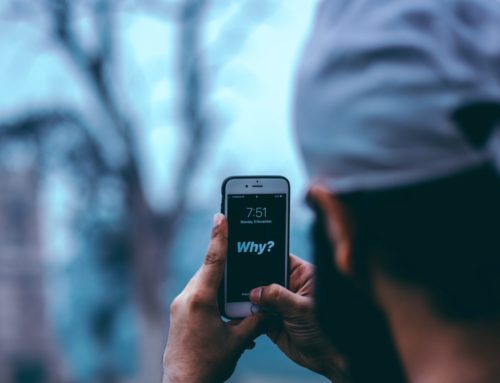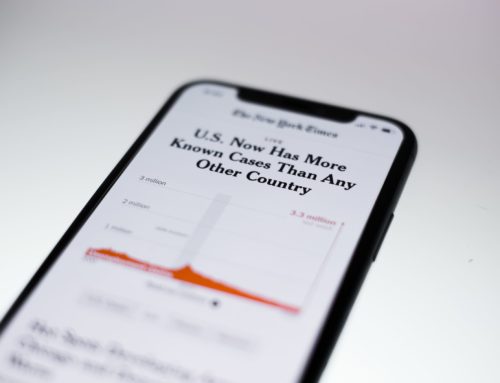Where ASL and GoReact Merge
Ku Mei Butler Kern, M.A., CI and CT
 GoReact was never intended to teach sign language. Really, it wasn’t. In fact GoReact software started out as a public speaking coaching tool. A professor invented GoReact as a way to critique presentations and rid the world of terrible presenters. As it so happened, it was also the perfect tool to help interpreters and ASL users be awesome.
GoReact was never intended to teach sign language. Really, it wasn’t. In fact GoReact software started out as a public speaking coaching tool. A professor invented GoReact as a way to critique presentations and rid the world of terrible presenters. As it so happened, it was also the perfect tool to help interpreters and ASL users be awesome.
How It All Started
The lucky person who figured this out was an ASL interpreting professor from the University of South Florida (USF). In the early 2000s, Professor Andrea Smith was already using video to coach her students—but the method was far from easy.
Her students recorded their interpreting on jump drives, then Smith spent hours watching all the submissions, hand writing feedback, then calling in each individual student to review the feedback in person. Each 15-minute video required two hours of work. But without those two hours and the in-person conference, Smith’s students rarely understood their feedback well enough to make lasting changes.
Without that in-person conference piece, this entire 2-hour process wasn’t worth anything. And even when the students improved, this jump drives and paper approach was tedious and way too time-consuming to be worth it.
******************************
By comparison, GoReact sounded incredible. Smith found GoReact at a communication conference and instantly knew it was the answer to the challenges she was facing. Recording student videos in the cloud? Time-stamped feedback? Students reviewing that feedback on their own and seeing exactly what to change? All of it sounded amazing, but there were two things GoReact needed to be perfect for interpreting programs.
The first was video commenting so educators could leave comments in ASL. The second was the stimulus activity model, which allows students to play a video and record their response to that video (or their interpreting) side by side. With these new features, GoReact was ready to enter the sign language education space and change it forever.
******************************
So why do GoReact and ASL make such a great pair?
Well for starters they’re both visual. ASL students need to see examples to get better (Quinto-Pozos, 2011), and GoReact makes that possible. Not only can instructors leave comments in ASL, they can also create a full-immersion experience in the classroom where they’re teaching, testing, and giving feedback in the target language of ASL. Beyond that, here are some of the many other reasons GoReact works so well for interpreting:
Self-assessment—One of the most useful things about GoReact in the classroom is how easily it inspires self-reflection. Watching yourself sign is always uncomfortable, but once students watch themselves on video, inevitably they start making changes and comparing their signs to their instructors’. This is hands down the best way for students to identify errors, assess other students, and master sign language. All of these habits encourage the development of lifelong self-assessment skills.
Real world application—It’s one thing to tell a student how to sign something. It’s another thing to show them how in practice. GoReact’s markers and customizable rubrics are a great way to tag videos and show students real-time examples of how they’re doing. Then it’s far easier for them to apply what they’re learning in class to real interpreting and ASL conversations. This kind of application is the key to great interpreting skills.
Strong scaffolding—I’ve discovered time and time again that video feedback sticks. The visuals make an impression on students, and the result is meaningful changes and steady improvement. When an instructor’s feedback is seen and understood, it creates a strong foundation for students to build and continue building new skills all the way into their professional careers.
Openness to feedback—One of the best professional skills any student can learn is how to accept feedback gracefully and be flexible. The entire process of using GoReact is centered on receiving feedback and applying it, which gives students valuable experience receiving criticism based on solid data and video evidence. All of this helps students become open to changes and comfortable with critique.
Ownership of learning—It’s an uphill battle persuading students to engage with the material and not rely on the teacher’s instructions 100% of the time. But a great side-effect of GoReact is that it helps students take ownership of their own development in the language. The result? GoReact allows them to proactively watch their videos, make changes on their own, and record themselves as many times as they want.
On top of all of this, one last reason video feedback works is because it provides immediate feedback in the cloud—even if that feedback is given asynchronously. This type of immediacy makes it not only easy but highly effective to teach ASL online, something many teachers still don’t believe is possible. Research from Dr. Curt Radford, M.Ed., has found the same thing (Radford, 2012).
With tools like GoReact closing the feedback gap in online education, ASL is now something anyone can learn, no matter where they are. For me, that’s the most exciting part of GoReact’s influence on interpretation instruction: the spreading reach of high-quality programs means that more people than ever have the opportunity to learn ASL. That is victory.
References
Radford, C. & Legler, N. (July 6, 2012). Exploring the Efficacy of Online ASL Instruction Using Canvas. Presentation at Utah State University. Retrieved from https://vimeo.com/45325373.
Quinto-Pozos, D. (2011). Teaching American Sign Language to Hearing Adult Learners. Annual Review of Applied Linguistics, 31, 137-158. doi:10.1017/S0267190511000195
Ku Mei Butler Kern, M.A., CI and CT, grew up with Deaf parents who used American Sign Language as their primary language. She has been a professional sign language interpreter for the last 20 years, interpreting in K-12, university, medical, mental health, judicial, job training, and other business settings. While interpreting, Ku Mei also managed a sign language interpreting agency in Utah and Nevada and established her own agency in Hawaii. She has also taught her native language at the elementary, high school, college, and community levels. Ku Mei’s degrees include a bachelor’s in Human Services Management and a master’s in ASL Teaching. She loves the outdoors, exotic vacations, and her twelve-year old daughter and cat.








Leave A Comment
You must be logged in to post a comment.